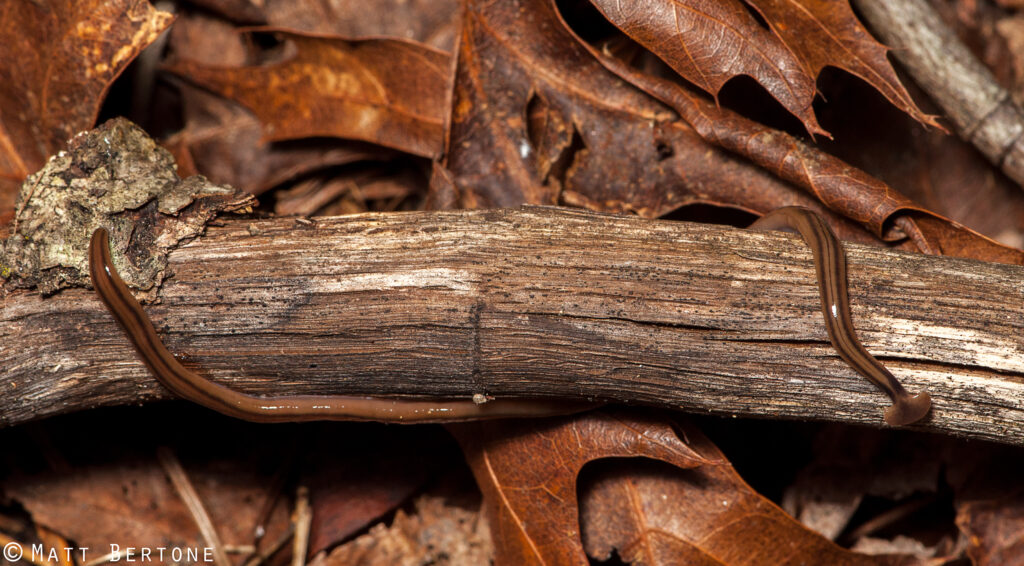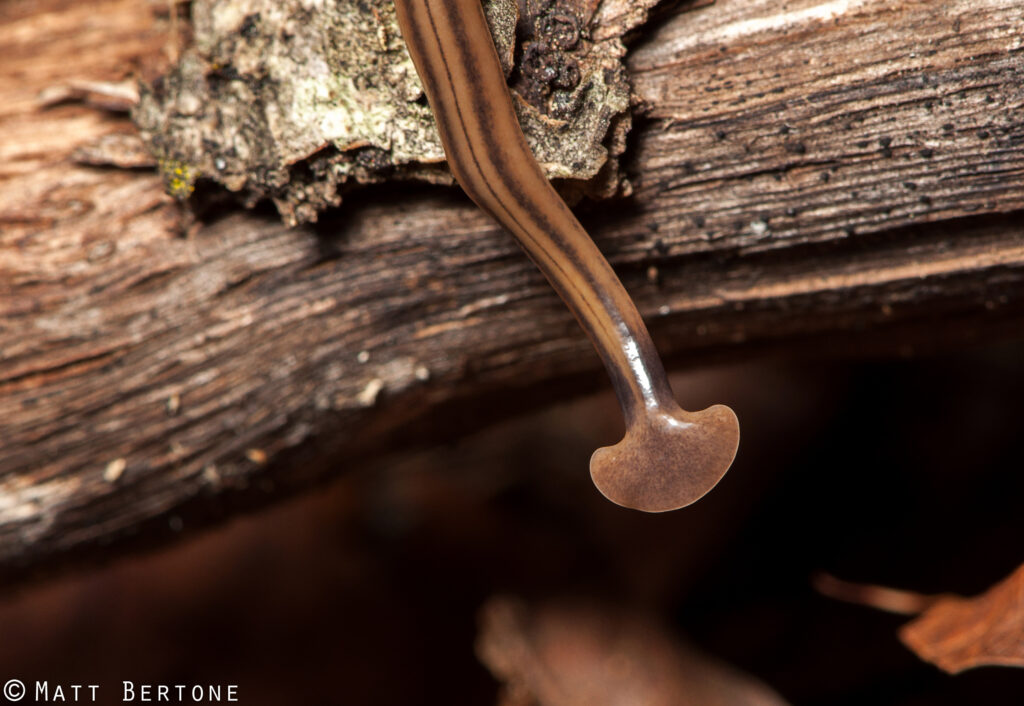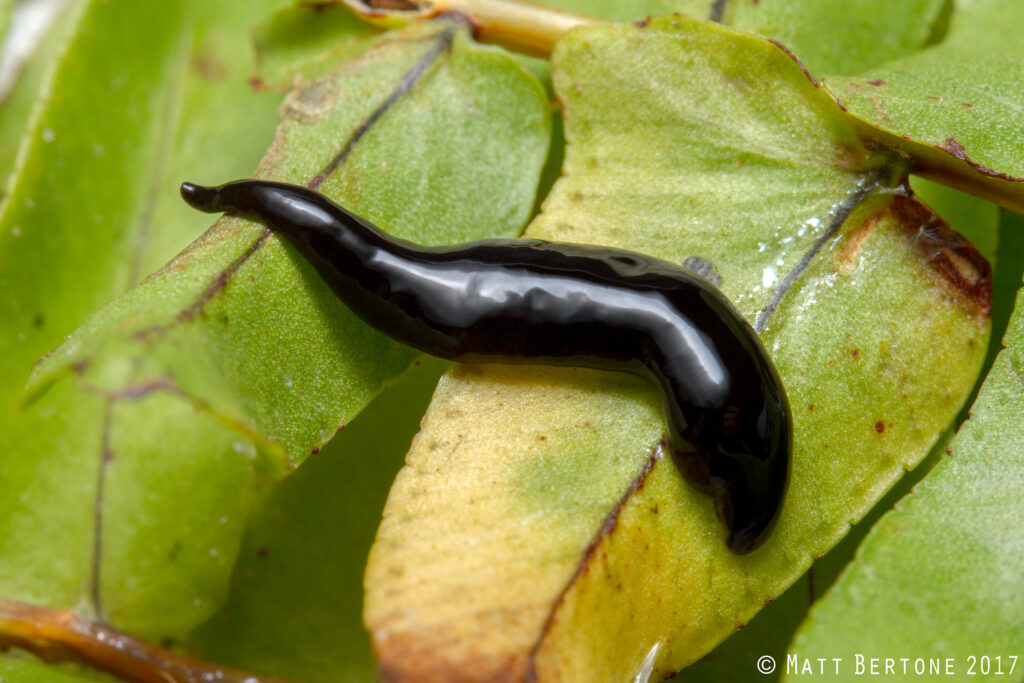Pest Alert – Terrestrial Flatworms and Hammerhead Worms
go.ncsu.edu/readext?867285
en Español / em Português
El inglés es el idioma de control de esta página. En la medida en que haya algún conflicto entre la traducción al inglés y la traducción, el inglés prevalece.
Al hacer clic en el enlace de traducción se activa un servicio de traducción gratuito para convertir la página al español. Al igual que con cualquier traducción por Internet, la conversión no es sensible al contexto y puede que no traduzca el texto en su significado original. NC State Extension no garantiza la exactitud del texto traducido. Por favor, tenga en cuenta que algunas aplicaciones y/o servicios pueden no funcionar como se espera cuando se traducen.
Português
Inglês é o idioma de controle desta página. Na medida que haja algum conflito entre o texto original em Inglês e a tradução, o Inglês prevalece.
Ao clicar no link de tradução, um serviço gratuito de tradução será ativado para converter a página para o Português. Como em qualquer tradução pela internet, a conversão não é sensivel ao contexto e pode não ocorrer a tradução para o significado orginal. O serviço de Extensão da Carolina do Norte (NC State Extension) não garante a exatidão do texto traduzido. Por favor, observe que algumas funções ou serviços podem não funcionar como esperado após a tradução.
English
English is the controlling language of this page. To the extent there is any conflict between the English text and the translation, English controls.
Clicking on the translation link activates a free translation service to convert the page to Spanish. As with any Internet translation, the conversion is not context-sensitive and may not translate the text to its original meaning. NC State Extension does not guarantee the accuracy of the translated text. Please note that some applications and/or services may not function as expected when translated.
Collapse ▲A long hammerhead worm (Bipalium kewense) found in Raleigh NC in 2013. This species has been in NC since at least 1951.
As if Asian giant hornets weren’t enough, this year also saw media attention on a lesser-known, but bizarre, group of animals: terrestrial flatworms & hammerhead worms.
Although alien-looking and often off-putting, these worms are a natural part of many ecosystems. While some species are native to North Carolina, others are foreign in origin, having been transported here through human endeavors over the years.
We summarized relevant information in a new fact sheet, but the following points can be used for quick reference:
- Though not usually noticed by the public, at least five species of hammerhead worms have been in North Carolina for many years or even decades. The pattern of stripes can be helpful to identify species, though all have a similar biology.
The semi-circular head of flatworms in the genus Bipalium (and closely related genera) house sensory organs and numerous tiny eyes, and also give rise to their common name, hammerhead worms.
- Hammerhead species are not the only flatworms; many are wide in middle and pointed at the head and posterior ends. These species are often black, blue, brown or gray in color.
This small, dark, and shiny terrestrial flatworm is one of several species that do not have a hammerhead. These species are often dark brown, blue, gray or black.
- Flatworms are generalist predators, though some have more specific tastes. They hunt down soft-bodied prey like earthworms, snails, slugs, and small arthropods like sowbugs, spiders, and insects. Flatworms wrap around their prey and digest it on the underside of their body where their mouth is located.
- Reproduction can happen through sexual means (though they are hermaphrodites), but very often flatworms reproduce asexually by physically splitting to form new worms. This also means that worms that are cut up can grow back to become multiple new worms.
- Flatworms require moist habitats to survive. Wet weather may promote their populations, perhaps the reason why many have been seen this year.
- There is a concern that these worms pose an issue to native invertebrates by preying on them. While this may be true in some areas where they are newly introduced, it is likely not the case here in North Carolina as several species have been established for many decades, and are now part of the ecosystem (for better or worse).
- Although generally harmless, some flatworms can carry rat lungworms, a parasite that can infect people only if the worm is eaten. It’s also been discovered that some species of Bipalium produce tetrodotoxins in their mucus. Some people are even sensitive to the mucus on its own. Due to these concerns it’s always best to minimize handling these worms, though if handled it’s recommended to not touch eyes and mouths, and wash hands thoroughly afterward.
Terrestrial flatworms and hammerhead worms may seem strange and worrisome, but overall they are a part of our state’s ecosystem, whether they were invited or not. To that point, many find their way here through movement of soil and plant materials, so be aware of flatworms when purchasing plants and other garden items. If you find any suspicious worms in items, especially ones notably different from those described in the fact sheet, it’s best to contact the NC State Plant Disease and Insect Clinic so we can be made aware of their presence in the state.







